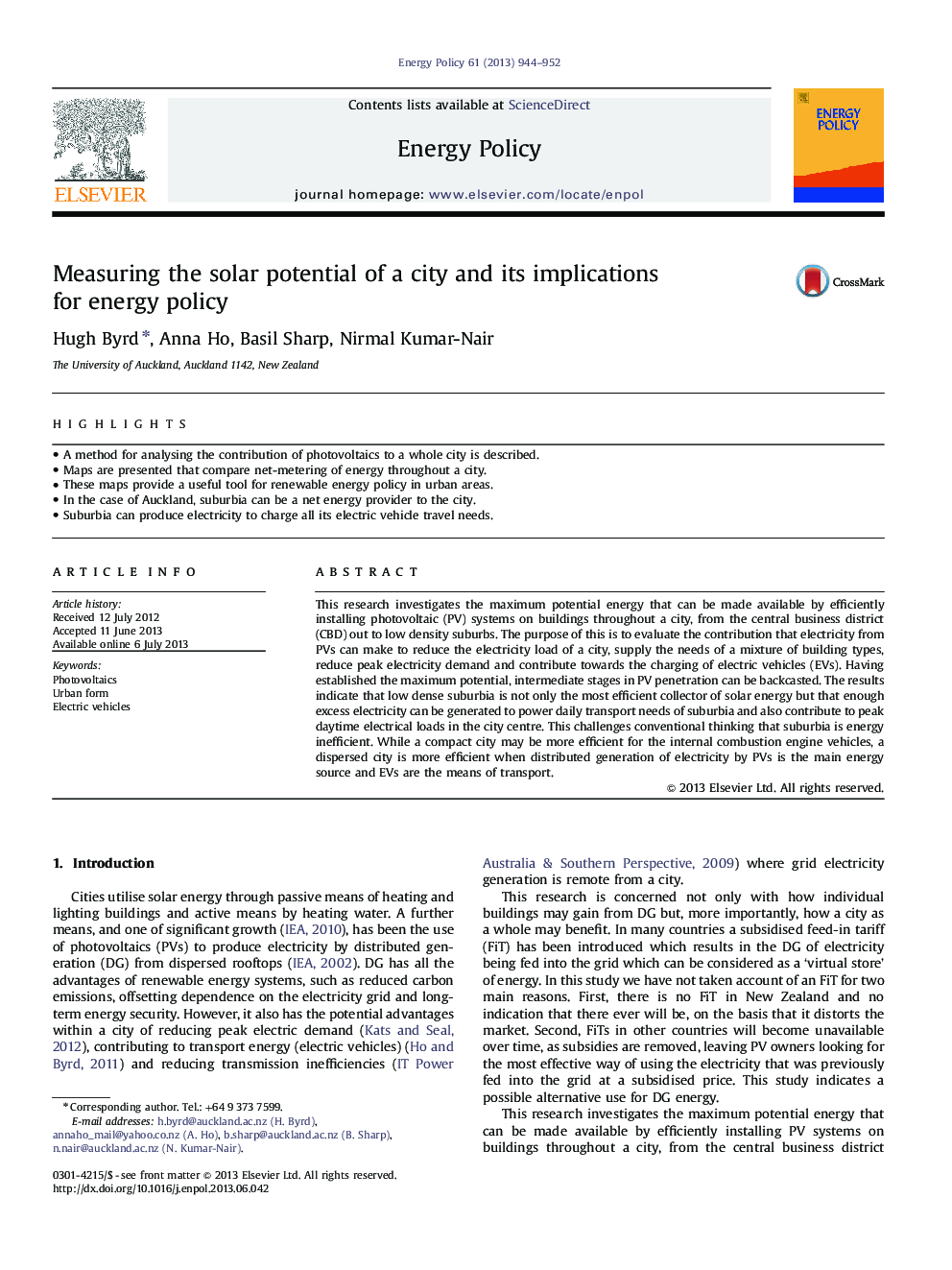| Article ID | Journal | Published Year | Pages | File Type |
|---|---|---|---|---|
| 7405003 | Energy Policy | 2013 | 9 Pages |
Abstract
This research investigates the maximum potential energy that can be made available by efficiently installing photovoltaic (PV) systems on buildings throughout a city, from the central business district (CBD) out to low density suburbs. The purpose of this is to evaluate the contribution that electricity from PVs can make to reduce the electricity load of a city, supply the needs of a mixture of building types, reduce peak electricity demand and contribute towards the charging of electric vehicles (EVs). Having established the maximum potential, intermediate stages in PV penetration can be backcasted. The results indicate that low dense suburbia is not only the most efficient collector of solar energy but that enough excess electricity can be generated to power daily transport needs of suburbia and also contribute to peak daytime electrical loads in the city centre. This challenges conventional thinking that suburbia is energy inefficient. While a compact city may be more efficient for the internal combustion engine vehicles, a dispersed city is more efficient when distributed generation of electricity by PVs is the main energy source and EVs are the means of transport.
Related Topics
Physical Sciences and Engineering
Energy
Energy Engineering and Power Technology
Authors
Hugh Byrd, Anna Ho, Basil Sharp, Nirmal Kumar-Nair,
